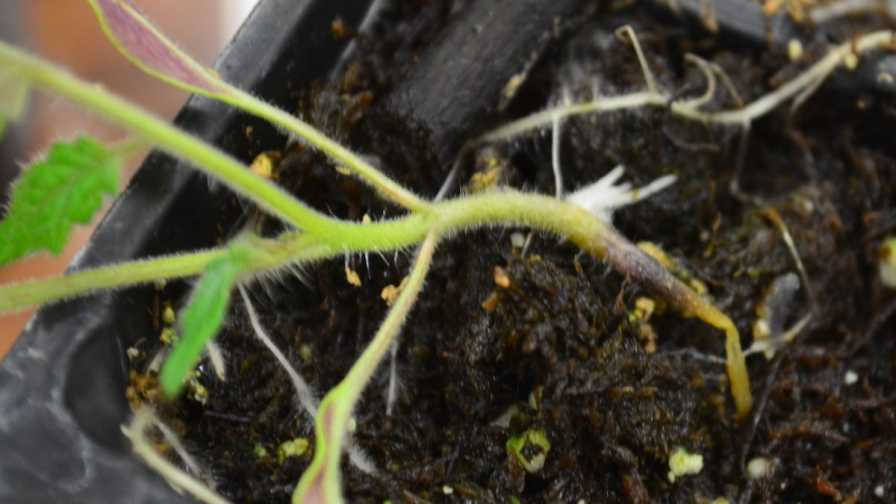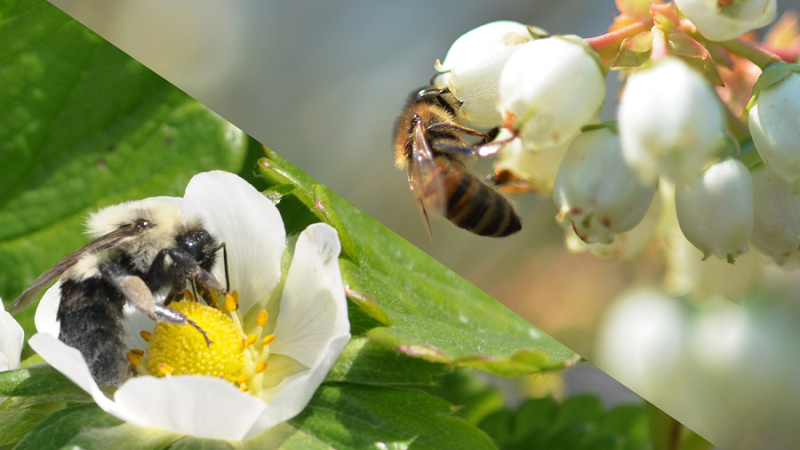Prohibit Pythium From Putting a Damper on Your Vegetables

This tomato plant is showing signs of damping off. Photo by Gene McAvoy
Disease Specs
The host range for Pythium spp. is extremely wide. Crops commonly infected include beans cucurbits, peppers, southern peas, strawberries, and tomatoes.
Identification
The combination of abundant soil moisture and elevated temperatures conspire to make the fall planting season a prime time for vegetable growers in Florida to encounter problems with Pythium spp. on a variety of vegetables. Pythium typically attacks roots causing damping off, seedling blights, root rots, and wilting of affected crops. In some instances, Pythium may affect the above ground portions of crops.
Pythium myriotylum and P. aphanidermatum are most abundant in Florida because they are adapted to high soil temperatures.
Pythium often is associated with root rots and pre-emergent and post-emergent damping off. One of the characteristics of tissue infected with Pythium spp. is the presence of water-soaked or greasy appearing tissue. This is in contrast to the orange to red to dark, sunken lesions caused by Rhizoctinia solani.
Infection with Pythium spp. also causes wilting of numerous crop species. Plants affected by Pythium root and stem rots commonly exhibit yellowing of the lower leaves.
In small plants planted thickly, such as greenhouse transplants, Pythium can infect, colonize, and destroy the entire plant. Look for water-soaked tissue and the presence of white mycelial growth in such situations.
Excess fertilizer, flooded soils, insect feeding, and nematode feeding also might contribute to dysfunctional roots. For accurate diagnosis, it is best to submit samples to a reputable diagnostic laboratory.
Survival and Spread
Pythium is one of the oomycetes or “water molds.” It thrives in moist soils and multiplies and spreads rapidly under wet conditions.
Although Pythium is capable of producing several spore types, zoospores and oospores are most important.
Zoospores are mobile. They are produced rapidly and in great numbers and contribute to the organism’s ability to cause disease almost “over-night.” Zoospores may be detected within 30 minutes after a site is flooded and can “swim” for up to 30 hours and move three or more inches through soil.
Oospores are extremely durable and can survive in soil and infect crop debris for more than 10 years. A number of broadleaf and grassy weeds may host Pythium spp. and serve as important sources of inoculum.
Management Methods
Resistant cultivars do not exist, so control of Pythium depends on a variety of tactics.
Crops should be planted on raised beds in well-drained soils.
Pre-plant soil fumigation is effective if applied correctly. Fumigant formulations containing chloropicrin are most effective in providing control. Control is at best temporary. Under the right conditions, zoospores from non-fumigated soil may readily re-infest treated beds.
Fungicidal drenches such as Ridomil Gold (mefenoxam, Syngenta) are effective for the suppression of seedling blights and root rots if applied before infection occurs.
Several biological control agents, including actinomycetes and other bacteria and fungi, are available commercially for suppression of Pythium and other soilborne pathogens.










